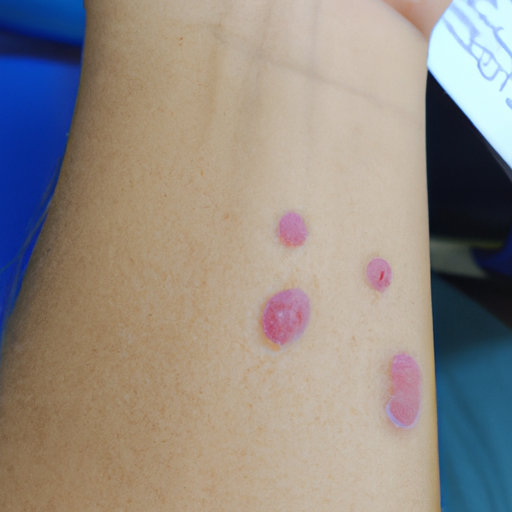Early Signs Of Leukemia

How to Recognize the Early Signs of Leukemia
Leukemia is a type of cancer that affects the blood and bone marrow. It is a serious condition that can be life-threatening if not treated promptly. Knowing the early signs of leukemia can help you get the treatment you need as soon as possible.
The most common early signs of leukemia are fatigue, fever, and frequent infections. If you are feeling unusually tired or weak, or if you have a fever that won’t go away, it’s important to see your doctor right away. Other signs of leukemia include unexplained weight loss, night sweats, bone or joint pain, and swollen lymph nodes.
If you experience any of these symptoms, it’s important to see your doctor right away. Your doctor will be able to perform tests to determine if you have leukemia. These tests may include a complete blood count, a bone marrow biopsy, and other imaging tests.
It’s important to remember that these symptoms can also be caused by other conditions, so it’s important to get a proper diagnosis from your doctor. If you are diagnosed with leukemia, your doctor will discuss treatment options with you. Treatment may include chemotherapy, radiation therapy, or a stem cell transplant.
If you experience any of the early signs of leukemia, don’t wait to get help. See your doctor right away to get the treatment you need.
The Role of Blood Tests in Diagnosing Leukemia
If you’ve been experiencing symptoms that could be related to leukemia, your doctor may order a blood test to help diagnose the condition. Blood tests are an important part of the diagnostic process for leukemia, and can provide valuable information about your health.
Leukemia is a type of cancer that affects the blood and bone marrow. It’s caused by an abnormal production of white blood cells, which can lead to a variety of symptoms, including fatigue, fever, and anemia. Blood tests can help diagnose leukemia by looking for abnormal levels of white blood cells, red blood cells, and platelets.
A complete blood count (CBC) is the most common type of blood test used to diagnose leukemia. This test measures the number of red blood cells, white blood cells, and platelets in your blood. Abnormal levels of these cells can indicate the presence of leukemia.
Your doctor may also order a peripheral blood smear, which is a microscopic examination of your blood. This test can help identify abnormal white blood cells, which can be a sign of leukemia.
In addition to these tests, your doctor may also order a bone marrow biopsy. This test involves taking a sample of bone marrow from your hipbone and examining it under a microscope. The results of this test can help confirm a diagnosis of leukemia.
Blood tests are an important part of diagnosing leukemia, and can provide valuable information about your health. If you’re experiencing symptoms that could be related to leukemia, talk to your doctor about getting a blood test.
Understanding the Different Types of Leukemia
Leukemia is a type of cancer that affects the blood and bone marrow. It is a serious and potentially life-threatening condition, but with the right treatment, many people can live long and healthy lives. Understanding the different types of leukemia can help you make informed decisions about your care.
Acute leukemia is a fast-growing cancer that can quickly spread throughout the body. It is most common in children and young adults, and it is usually treated with chemotherapy. Chronic leukemia is a slower-growing cancer that can take years to develop. It is more common in adults, and it is usually treated with medications or radiation.
Myeloid leukemia is a type of acute leukemia that affects the myeloid cells in the bone marrow. These cells are responsible for producing red and white blood cells, as well as platelets. Myeloid leukemia is usually treated with chemotherapy and sometimes a stem cell transplant.
Lymphocytic leukemia is a type of acute leukemia that affects the lymphocytes in the bone marrow. These cells are responsible for fighting infection and disease. Lymphocytic leukemia is usually treated with chemotherapy and sometimes a stem cell transplant.
Hairy cell leukemia is a type of chronic leukemia that affects the B-cells in the bone marrow. These cells are responsible for producing antibodies to fight infection and disease. Hairy cell leukemia is usually treated with medications or radiation.
Myeloproliferative disorders are a group of chronic leukemias that affect the myeloid cells in the bone marrow. These cells are responsible for producing red and white blood cells, as well as platelets. Myeloproliferative disorders are usually treated with medications or radiation.
No matter what type of leukemia you have, it is important to talk to your doctor about your treatment options. With the right care, you can live a long and healthy life.
The Impact of Leukemia on Children
Leukemia is a type of cancer that affects the blood and bone marrow. It is the most common type of cancer in children, and it can be a very scary diagnosis for both the child and their family.
When a child is diagnosed with leukemia, it can be a difficult time for everyone involved. It can be hard to understand what is happening and why, and it can be overwhelming to think about the treatments and the long road ahead.
The good news is that there are treatments available that can help children with leukemia. With the right care and support, children can go on to lead healthy and happy lives.
It is important to remember that each child is different and will respond differently to treatment. Some children may need more intensive treatments than others, and some may need more support than others. It is important to talk to your child’s doctor about what is best for them.
It is also important to remember that children with leukemia are still children. They still need to have fun and enjoy life. It is important to make sure that they have time to play and do the things that they enjoy.
Leukemia can be a difficult diagnosis, but it is important to remember that there is hope. With the right care and support, children with leukemia can go on to lead healthy and happy lives.
Exploring the Latest Treatments for Leukemia
Leukemia is a type of cancer that affects the blood and bone marrow. It is a serious and life-threatening condition, but there are treatments available that can help. In this blog post, we’ll explore some of the latest treatments for leukemia and how they can help those affected by the disease.
One of the most common treatments for leukemia is chemotherapy. This involves using drugs to kill cancer cells and stop them from growing. Chemotherapy can be used alone or in combination with other treatments, such as radiation therapy or stem cell transplants. It can be an effective way to treat leukemia, but it can also have some unpleasant side effects, such as nausea, hair loss, and fatigue.
Another treatment option is targeted therapy. This involves using drugs to target specific molecules in cancer cells that help them grow and spread. Targeted therapy can be used alone or in combination with other treatments, and it can be an effective way to treat leukemia. However, it can also have some side effects, such as skin rashes, nausea, and fatigue.
Immunotherapy is another treatment option for leukemia. This involves using drugs to boost the body’s immune system so it can fight the cancer cells. Immunotherapy can be used alone or in combination with other treatments, and it can be an effective way to treat leukemia. However, it can also have some side effects, such as fever, chills, and fatigue.
Finally, stem cell transplants are another treatment option for leukemia. This involves using healthy stem cells from a donor to replace the cancerous cells in the patient’s body. Stem cell transplants can be an effective way to treat leukemia, but they can also have some serious side effects, such as infection, organ damage, and even death.
These are just a few of the latest treatments for leukemia. If you or someone you know has been diagnosed with leukemia, it’s important to talk to your doctor about the best treatment options for you. With the right treatment, you can manage your condition and live a long and healthy life.





